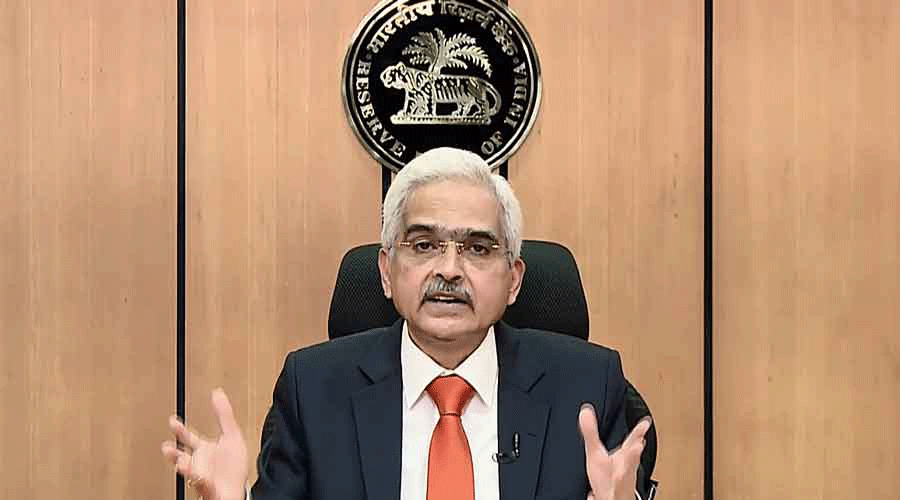Banking mavens in India are not unduly worried about the International Monetary Fund’s dire forecast that banks in emerging markets might have to wrestle with a serious capital shortfall if the global economy tips into a recession next year
In its Global Financial Stability Report released last week, the IMF said its latest stress tests have revealed that if the global economy plunged into a recession in 2023, “up to 29 per cent of emerging market banks (by assets) would breach capital requirements” and would require over $200 billion to rebuild their capital buffers.
The IMF’s forecast hasn’t spooked the experts in India who believe that banks in India are more than adequately capitalised and extremely resilient to withstand any sudden shocks.
The IMF added that pressures are particularly severe in frontier markets—generally smaller developing economies—where challenges are driven by a combination of tightening financial conditions, deteriorating fundamentals and high exposure to commodity price volatility.
Reserve Bank of India governor Shaktikanta Das has on various occasions stressed the need for banks to raise capital.
In an interview with Zee Business last month, Das said that banks have to think of the worst and do their best.
“We have to envisage the maximum amount of stress and do our best. They (banks) should always be prepared. Based on these analyses, banks should raise capital,” he said.
While the capital position of many of the private sector banks is strong, there have been concerns in the past about various PSU banks that were dependent on the Centre for the infusion of cash.
However, analysts said the PSU banks have also strengthened their capital position and there is no need to worry about them breaching the regulatory requirements.
According to Karan Gupta, director-financial institutions of India Ratings and Research, domestic banks are wellplaced on the capital front and this includes both private sector lenders and their PSU counterparts.
“Typically, private sector banks have faced minimal challenges in raising capital as their access to equity markets has been good. Whenever they need capital, they are able to tap the equity markets, except in some exceptional circumstances,” Gupta said.
“Given that these banks target growth that is significantly higher than the system, they always run with ample buffers on the capital side. Their CET1 (common equity Tier 1 capital) would be far in excess of the requirement itself.”
“While the requirement would be pegged at close to 8 per cent, for most of the private sector banks, the CET1 would be north of 14-16 per cent. So they have a fair amount of runway,’’ he said.
As regards PSU banks which account for nearly 65 per cent of India’s banking system, Gupta said that in the past they have always been in need of capital and dependent on the Centre for infusion in most cases.
They also had limited access to equity markets except for a couple of large franchises such as State Bank of India (SBI) and Bank of Baroda (BoB) and were behind in provisioning coverage ratio (PCR) compared with their private counterparts.
“However, presently, the corporate asset quality cycle has played out and these banks are sitting with average PCR of 70 per cent, which is a fairly high number,” Gupta said.
“Since the asset quality cycle has played out, the incremental requirement of provisioning will also not be that high. This means that their profitability has also improved hinting at internal accruals also adding to their capital numbers.”
“Moreover, the buffers that they are carrying right now, most of these banks are working with CET1 north of 11-12per cent which gives them enough leeway in terms of the future growth that they are targeting’’.
Gupta said at present there are no concerns on the capital side and from a domestic perspective, banks are in a very good position amid the global turbulence. CET1 is considered the highest quality of regulatory capital.
IMF India fears unfounded
■ What IMF said: Up to 29% of emerging market banks to breach capital requirements if there is recession in 2023
■ But Indian private banks have strengthened their capital position. They do not face any challenge in raising funds from the equity market
■ Indian private banks target high growth compared with national average. Capital gets accumulated and they have high buffers.
■ Private banks have common equity tier capital (CET1) of 14-16 against requirement of 8%
■ Even in PSU banks, which are dependent on the Centre the bad asset quality cycle have peaked. Increment requirement of provisions will not be high
■ Profitability of PSU banks have improved, which add to their capital. They have CET1 capital of 11-12%










